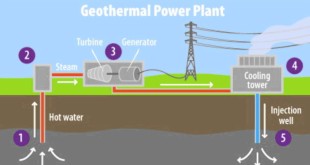Related Articles
Next-Gen Blast-Resistant Shelters Are Reinventing Soldier Safety in Combat
New materials and modular designs are transforming how we protect soldiers from deadly explosions on the battlefield.
In combat zones, blast threats are among the most dangerous hazards soldiers face. Explosions from improvised explosive devices (IEDs), artillery shells, and rocket attacks are prevalent and can inflict severe damage. These blasts generate high-intensity pressure waves that can cause traumatic injuries, including concussions, internal bleeding, and organ damage. The devastating impact of these explosions emphasizes the need for advanced protective structures capable of minimizing blast exposure to personnel in high-risk environments.
Current Structures and Challenges
Traditional military shelters and vehicles have often focused on protection from ballistic threats but have lacked sufficient capacity to defend against the unique dynamics of blast waves. Standard materials and structures, while effective against small arms fire and shrapnel, may not be capable of withstanding the intense pressure and force generated by large explosions. This gap in protection has led to a significant push for the development of specialized blast-resistant structures. Existing military shelters, though sturdy, are often heavy and bulky, limiting their deployability and effectiveness. Furthermore, most of these structures provide limited protection against the rapid pressure changes that occur during a blast event, putting soldiers at greater risk.
New Materials Revolutionizing Blast Resistance
To address these shortcomings, military engineers are focusing on incorporating new materials into the design of blast-resistant shelters. These materials are specifically chosen for their ability to absorb, dissipate, and redirect the energy generated by explosions, providing soldiers with a higher level of protection.
Carbon-fiber Composites: Known for their exceptional strength-to-weight ratio, carbon-fiber composites are being increasingly used in the construction of blast-resistant shelters. These materials are not only lightweight but also capable of withstanding immense pressures generated by nearby explosions. Carbon fiber’s shock-dissipating properties allow it to absorb blast energy without losing structural integrity, making it ideal for environments where rapid deployment and mobility are essential. The use of carbon fiber helps maintain the balance between protection and operational agility, ensuring that soldiers remain safe without being burdened by heavy, cumbersome equipment.
Aerogels: Aerogels are another breakthrough material revolutionizing the design of blast-resistant structures. These ultra-lightweight, highly porous materials are renowned for their exceptional shock-absorbing capabilities. Aerogels can be used to line the interiors of shelters, providing an additional layer of protection against blast waves. Their unique ability to dissipate energy makes them invaluable in reducing the transfer of force to shelter occupants. As aerogels are also highly thermal-insulating, they provide additional protection from the intense heat generated by explosions. This combination of lightweight design, energy dissipation, and thermal insulation makes aerogels an ideal candidate for enhancing the protection of soldiers in blast-prone areas.
Shock-Absorbing Polymers: Shock-absorbing polymers are another important component of modern blast-resistant shelters. These materials are engineered to deform under pressure, converting the kinetic energy from a blast into less harmful forces. This energy conversion process helps prevent structural damage and minimizes the risk of injury to personnel. By strategically integrating shock-absorbing polymers into key areas of shelters, engineers can create barriers that effectively absorb and distribute the energy from explosions, ensuring that soldiers remain protected. Additionally, these polymers maintain flexibility and adaptability, allowing shelters to withstand multiple blast events without compromising their effectiveness.
Blast-Resistant Structures and Modular Designs
The design of modern blast-resistant shelters goes beyond simply incorporating advanced materials; engineers are also focused on modularity and adaptability. Modern military shelters are designed to be easily transported, quickly assembled, and highly customizable to meet specific mission requirements. These modular systems can be deployed rapidly in the field, providing soldiers with immediate protection in areas at risk of explosions.
The modular nature of these shelters allows military forces to adjust the size and configuration of the protective structures to accommodate changing battlefield conditions. These shelters can be rapidly expanded to provide larger spaces for personnel or compressed for more compact use in tight areas. The versatility of modular blast-resistant shelters ensures that military personnel are always prepared for the unpredictable nature of combat zones, enhancing their ability to respond quickly to threats and maintain effective operations.
Future of Blast-Resistant Structures
As the nature of warfare continues to evolve, the demand for advanced blast-resistant structures will only increase. Engineers and scientists are continuing to explore new materials, technologies, and design principles to further improve the safety and survivability of soldiers. The combination of lightweight, high-performance materials such as carbon-fiber composites, aerogels, and shock-absorbing polymers, along with modular, adaptable designs, represents a new era in soldier protection. Future developments in blast-resistant shelters may include integrated systems that monitor and adjust the shelter’s internal environment in real-time, enhancing both comfort and safety.
In conclusion, the evolution of blast-resistant shelters is a critical aspect of safeguarding military personnel in combat zones. By leveraging innovative materials and advanced design techniques, these shelters are providing effective protection against blast-related injuries and saving lives in the process. As technology continues to progress, the future of soldier protection looks brighter, offering enhanced capabilities and better resilience in the face of ever-present blast threats.
 International Defense Security & Technology Your trusted Source for News, Research and Analysis
International Defense Security & Technology Your trusted Source for News, Research and Analysis

